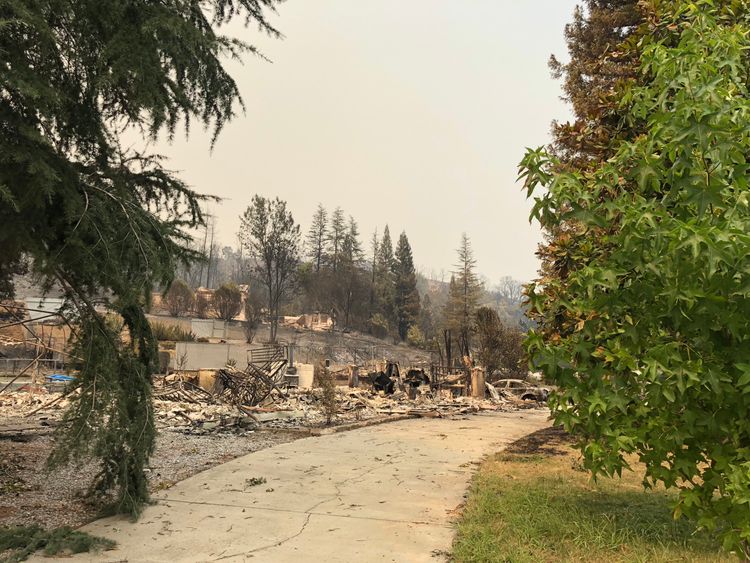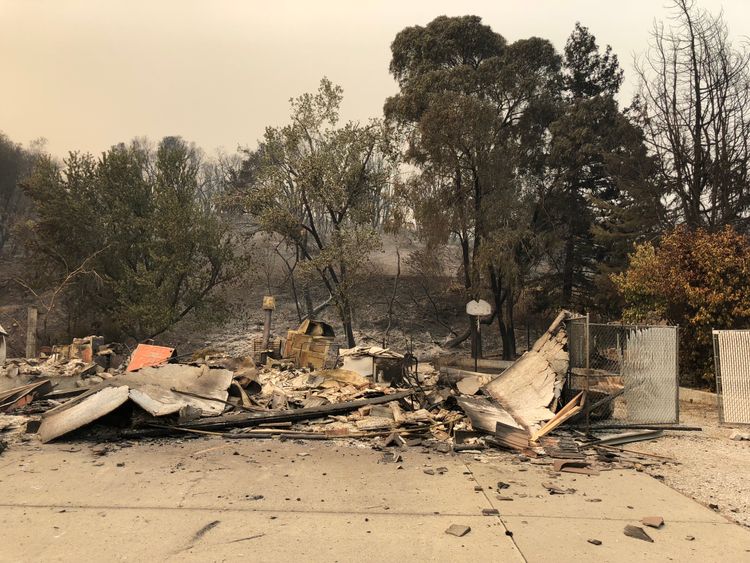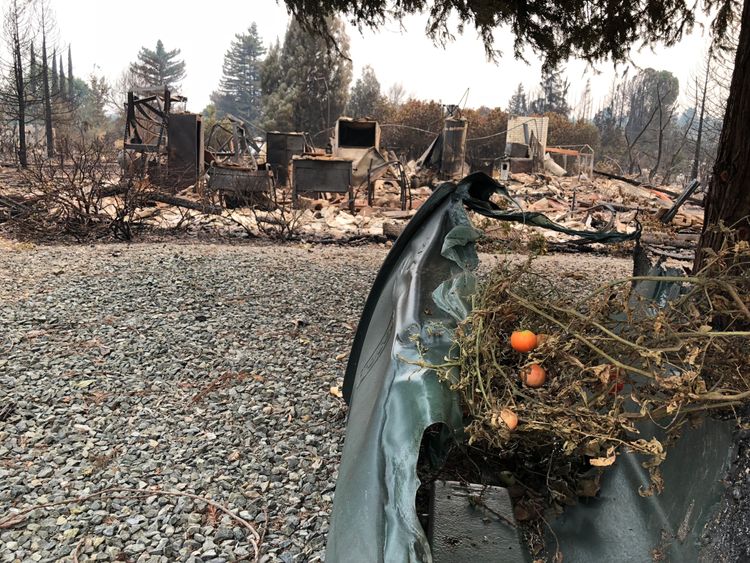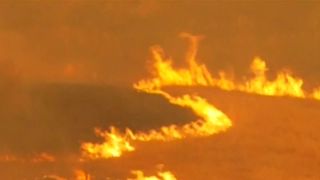There is an eeriness about the Lake Redding Estates.
Smoke hangs in the air, the broad streets are empty and it seems half the houses are now just piles of ash.
The people who usually live here have still not been allowed back to survey the damage cause by the Carr fire. Thousands remain frantic and confined to shelters.
When they can return, many will find little that is recognisable.
The freakish nature of these fires, as ever, did leave some houses completely untouched. Many others were destroyed.
A man called Todd has managed to find his way in. He stands in what was his bedroom and shakes his head. There is just one wall left standing in his entire house.


Lots of the large trees that line the streets here have survived. The houses they once shaded are just no longer there.
In between, you see the baffling aftermath of what have been called "fire tornadoes".
Trees pulled to the ground by swirling 70mph winds whipped into cyclonic patterns by the intensity of the heat – heat which has incinerated nearly everything in its path.
It has an otherworldly feel, but this scene is becoming a familiar one in neighbourhoods across California.
Lake Redding was one of those places where people had to run for their lives when the Carr fire exploded into life last week.

They left the mundane and everyday where it fell – a basketball hoop in the street, a boat half-loaded on to its trailer – as the flames swept through.
There is always something surreal about what survives and what doesn't. Untouched are a dog kennel, a plastic swimming pool duck, a mail box. A tomato plant rests on a melted wheelie bin.
A burst water pipe fountains water up into the air, everything around it charred.

Fire crews drive through hunting down hotspots, police patrols check for looters – and ash rains down in the still, stifling 40C (104F) heat.
Like so many communities before, people here will face the decision of whether to rebuild here or seek somewhere safer to live.
 1:27
1:27Wildfire season has barely started this year but, like last year, it has reached into city neighbourhoods, not just wooded rural areas.
More from California Wildfires
It means the deadly hazard of these fires is becoming a reality for more and more people.
It is going to be a long, hot summer in California.
There is an eeriness about the Lake Redding Estates.
Smoke hangs in the air, the broad streets are empty and it seems half the houses are now just piles of ash.
The people who usually live here have still not been allowed back to survey the damage cause by the Carr fire. Thousands remain frantic and confined to shelters.
When they can return, many will find little that is recognisable.
The freakish nature of these fires, as ever, did leave some houses completely untouched. Many others were destroyed.
A man called Todd has managed to find his way in. He stands in what was his bedroom and shakes his head. There is just one wall left standing in his entire house.


Lots of the large trees that line the streets here have survived. The houses they once shaded are just no longer there.
In between, you see the baffling aftermath of what have been called "fire tornadoes".
Trees pulled to the ground by swirling 70mph winds whipped into cyclonic patterns by the intensity of the heat – heat which has incinerated nearly everything in its path.
It has an otherworldly feel, but this scene is becoming a familiar one in neighbourhoods across California.
Lake Redding was one of those places where people had to run for their lives when the Carr fire exploded into life last week.

They left the mundane and everyday where it fell – a basketball hoop in the street, a boat half-loaded on to its trailer – as the flames swept through.
There is always something surreal about what survives and what doesn't. Untouched are a dog kennel, a plastic swimming pool duck, a mail box. A tomato plant rests on a melted wheelie bin.
A burst water pipe fountains water up into the air, everything around it charred.

Fire crews drive through hunting down hotspots, police patrols check for looters – and ash rains down in the still, stifling 40C (104F) heat.
Like so many communities before, people here will face the decision of whether to rebuild here or seek somewhere safer to live.
 1:27
1:27Wildfire season has barely started this year but, like last year, it has reached into city neighbourhoods, not just wooded rural areas.
More from California Wildfires
It means the deadly hazard of these fires is becoming a reality for more and more people.
It is going to be a long, hot summer in California.











